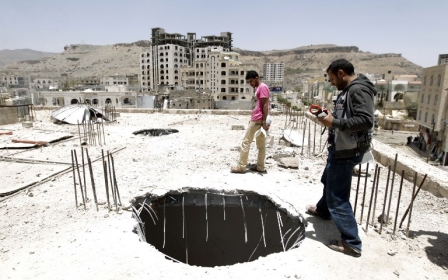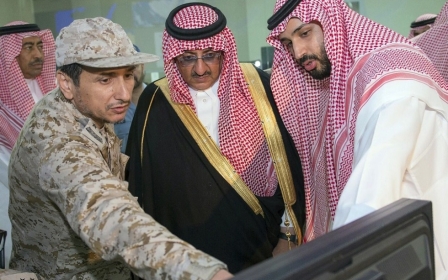Iranian warships arrive at strategic strait off Yemen coast

Two Iranian warships reached the Gulf of Aden just off the coast of Yemen on Wednesday, as Saudi Arabia said Iran had “absolutely no role to play” in the impoverished country.
Iran’s semi-official Fars News Agency reported that two warships had arrived at the Gulf of Aden, a strategic waterway that connects the Persian Gulf with Egypt’s Suez Canal and is thought to carry some 3.4 million barrels of oil daily.
The Navy's 34th Fleet, comprised of two vessels, left the Bandar Abbas port in a southern province of Iran for the Gulf of Aden on 8 April, with Iran saying the ships were on an “anti-piracy mission”.
The announcement of their arrival came a day after Saudi Arabia declared the end of an air campaign dubbed Operation Decisive Storm, which aimed at loosening the stranglehold of the Houthi militias who overran the Yemeni capital Sanaa last September.
At a press conference in Riyadh on Tuesday night, the spokesperson of Operation Decisive Storm said the campaign, which has seen some 3,200 bombs dropped on Yemen since its launch on 26 March, had destroyed all of the Houthi-controlled heavy weapons
Though initially understood as a ceasefire, the ending of Operation Decisive Storm saw a renewal of airstrikes in Yemen by the Saudi-led coalition, this time under the name Operation Restoring Hope.
Airstrikes were carried out on multiple sites in Yemen on Wednesday, including in the southern port city of Aden, where Houthis and fighters allied with deposed former president Ali Abdullah Saleh have been advancing for almost four weeks.
Clarifying the aim of Operation Restoring Hope on Wednesday, Adel Jubeir, the Saudi ambassador to Washington, said that “the second phase of the operation is not a ceasefire, but a shift from a strategic bombing campaign to one that will support, monitor and sustain the new political agreement”.
Jubeir also stressed during a press conference in Washington that Iran has “absolutely no role to play” in Yemen.
Coalition aircraft reportedly dropped leaflets on the central city of Taiz on Wednesday telling residents that “the aim of the coalition forces is to support the Yemeni people against the Iranian expansion”.
Tensions remain high
On Monday, days after the Iranian navy announced a deployment to the Gulf of Aden, the US Navy said that its aircraft carrier, the USS Theodore Roosevelt, was on its way to the region, escorted by the USS Normandy, a guided missile destroyer.
The decision to deploy the carrier came shortly after reports of that the Iranian fleet was sailing towards the Gulf of Aden.
"Many have asked me whether or not they are there because of the Iranian ship convoy or flotilla that is also in the area. That is certainly one of the factors," Pentagon spokesman Army Col. Steve Warren told reporters on Tuesday.
Meanwhile, Iranian Navy Commander Rear Admiral Habibollah Sayyari stressed his country's decision to maintain a presence in the Gulf of Aden, saying: "There is no need for our flotilla of warships to dock in Yemen, but we are present in the Gulf of Aden powerfully."
Iran is accused by the Gulf States of backing the Houthis, led by northern fighters who fought a six-year war with the Yemeni government before advancing south to take the capital.
Iran has made statements supportive of the Houthis, and has agreed to supply them with oil for a year, but has never made public statements about supplying them with weapons.
Fractious Yemen has been in turmoil since last September, when the Houthis overran capital Sanaa, from which they have since sought to extend their influence to other parts of the country.
On 25 March, Saudi Arabia and its Arab allies including Egypt, Sudan and Jordan, began an extensive air and naval campaign against Houthi positions across Yemen.
The announcement on Tuesday of the end of Operation Decisive Storm came as a surprise to many, almost exactly a month after the operation abruptly began.
However, bombing continued throughout the day on Wednesday, amid reports that Houthi fighters were shelling residential areas in Aden.
Middle East Eye propose une couverture et une analyse indépendantes et incomparables du Moyen-Orient, de l’Afrique du Nord et d’autres régions du monde. Pour en savoir plus sur la reprise de ce contenu et les frais qui s’appliquent, veuillez remplir ce formulaire [en anglais]. Pour en savoir plus sur MEE, cliquez ici [en anglais].




